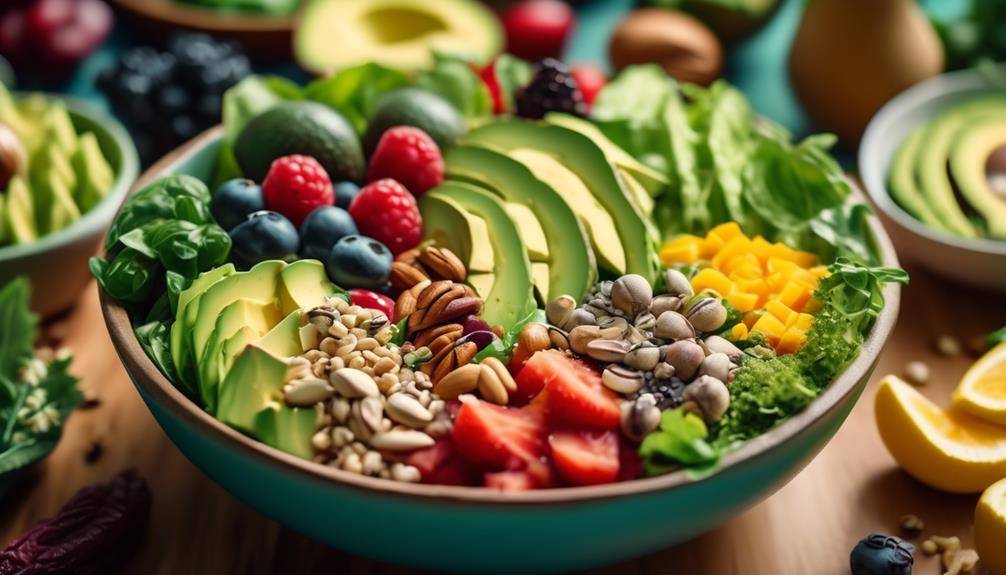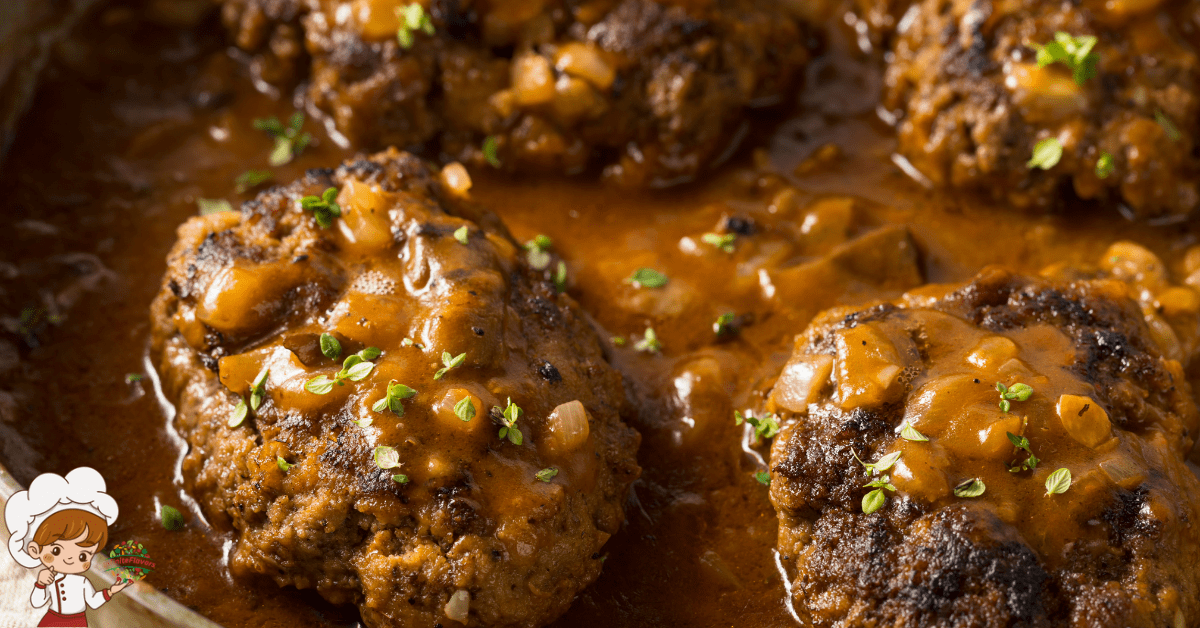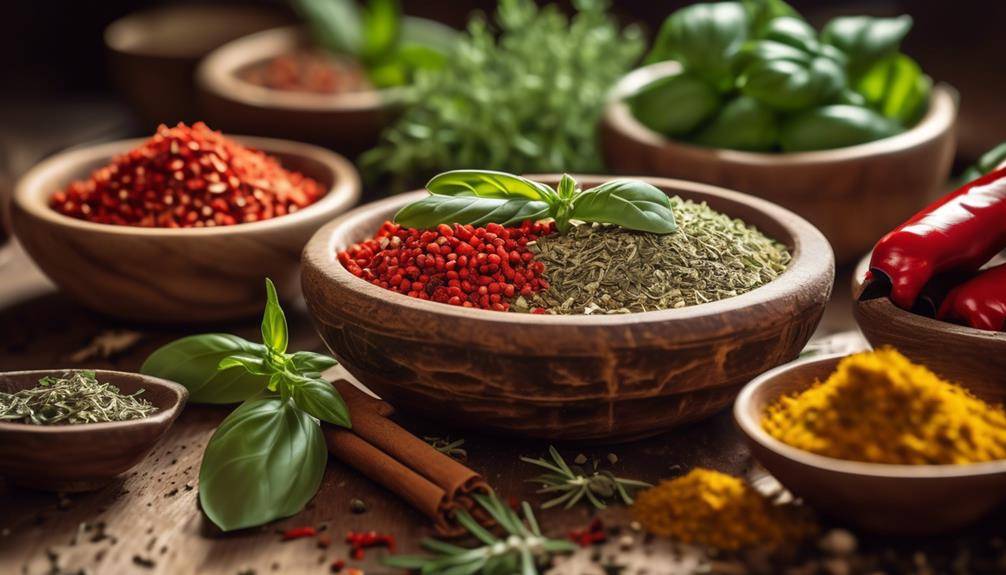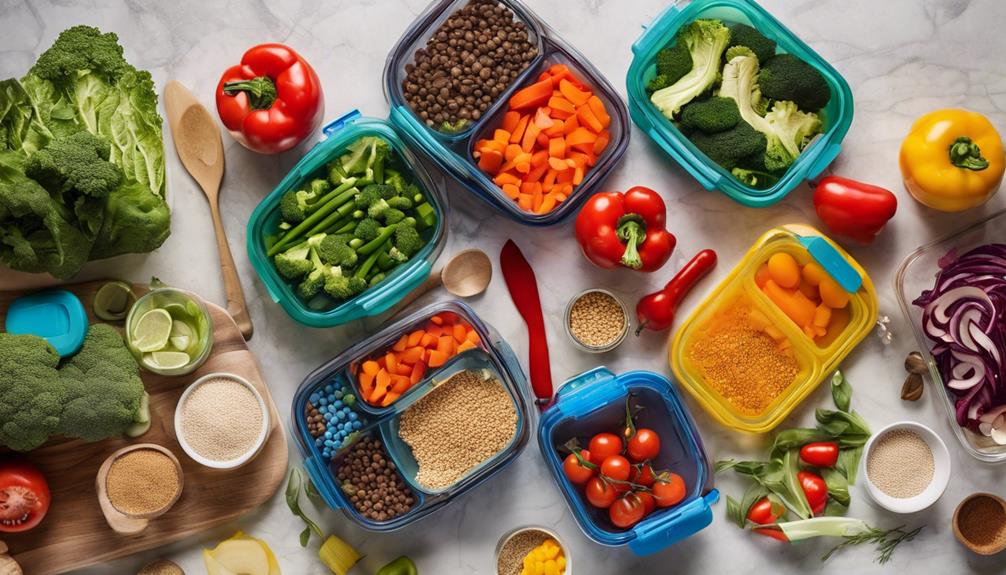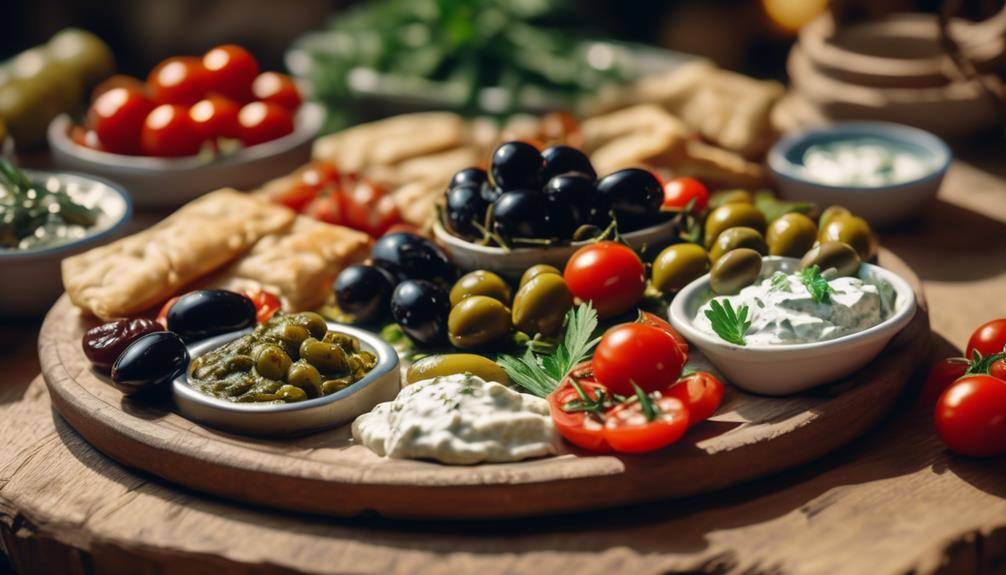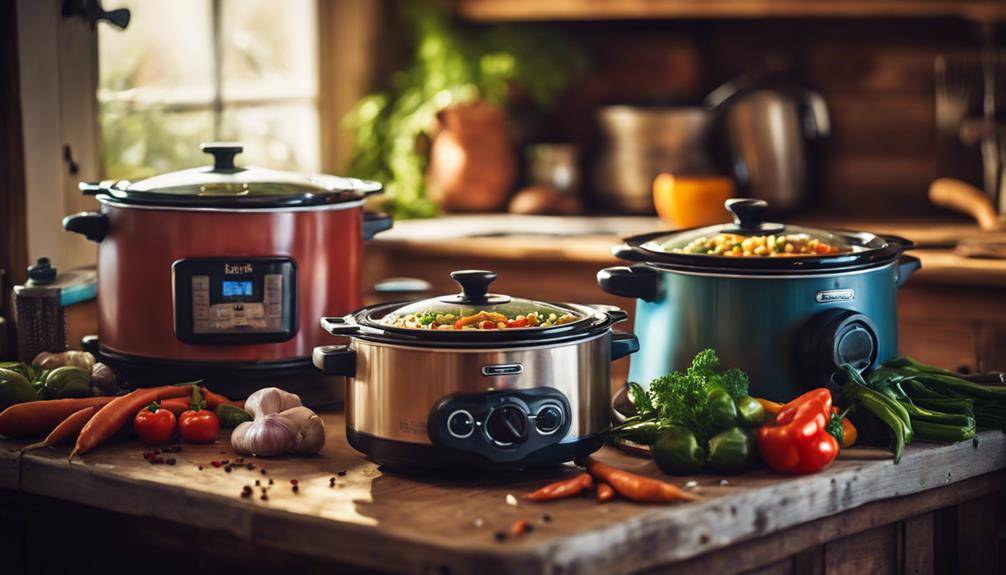Amazing Essential Gluten-Free Grains and Cereals
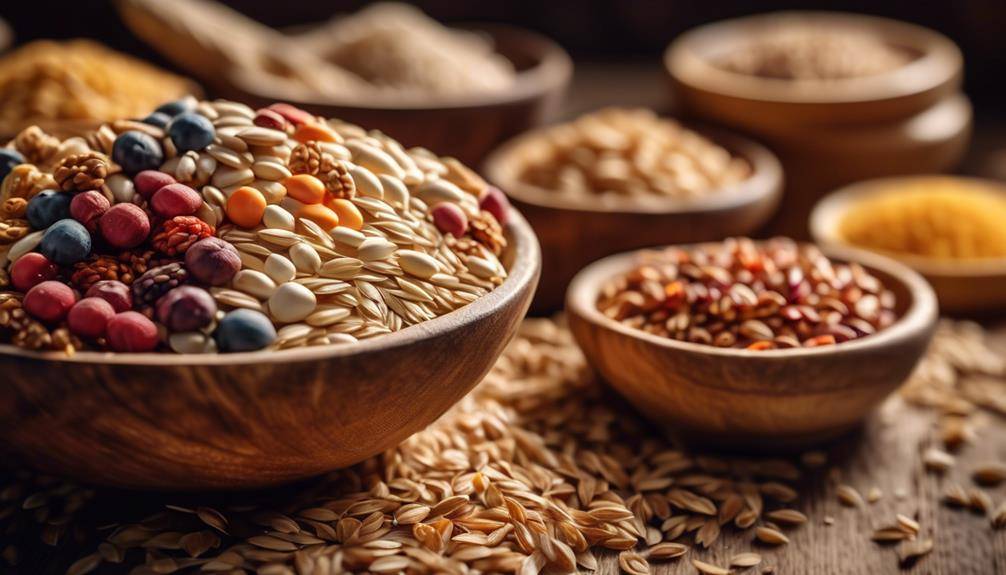
Essential Gluten-Free Grains and Cereals; Have you ever wondered what grains and cereals you can turn to when following a gluten-free diet? Well, look no further because we’ve got you covered. The world of gluten-free grains and cereals is vast, but there are a few essential ones that you need to know about. These grains and cereals not only provide a delicious alternative to their gluten-containing counterparts but also offer a wide range of nutrients that are essential for your overall well-being. So, get ready to discover these hidden gems that will add a flavorful twist to your meals and keep you feeling satisfied throughout the day.
Quinoa
Quinoa is a versatile and nutrient-rich grain that can be a valuable addition to a gluten-free diet. It is gaining popularity as a healthy alternative to traditional grains due to its exceptional nutritional value. Whether you are looking to diversify your gluten-free diet or simply want to incorporate a nutrient-packed grain into your meals, quinoa is an excellent choice.
One of the many benefits of quinoa is its versatility in cooking methods. You can cook it on the stovetop, similar to rice, by simmering it in water or broth until it absorbs the liquid. This method results in a fluffy texture and a nutty flavor. If you prefer a quicker option, you can use a rice cooker or an instant pot to cook quinoa. Simply add the grain and the required amount of liquid, and let the appliance do the work for you. You can also toast quinoa before cooking it to enhance its nutty taste.
In addition to its cooking versatility, quinoa is packed with essential nutrients. It is a complete protein, meaning it contains all nine essential amino acids that our bodies need. Quinoa is also high in fiber, which aids in digestion and helps maintain a healthy weight. Furthermore, it is a rich source of minerals such as magnesium, iron, and zinc, which are crucial for various bodily functions.
To summarize, quinoa offers a range of cooking methods and is a nutritional powerhouse. By incorporating this grain into your gluten-free diet, you can enjoy its versatility and reap the benefits of its exceptional nutritional value.
Brown Rice
Brown rice is a gluten-free grain that provides numerous health benefits. It is rich in fiber, vitamins, and minerals, making it a nutritious choice for your diet. Additionally, cooking brown rice is easy and can be done in a variety of ways, such as boiling, steaming, or using a rice cooker.
Health Benefits of Brown Rice
With its numerous health benefits, brown rice is a versatile and nutritious grain that can be incorporated into a variety of meals. Unlike white rice, brown rice is a whole grain that retains its bran and germ layers, providing essential nutrients like fiber, vitamins, and minerals. This makes it a healthier choice for individuals looking to improve their digestive health and manage their weight.
Brown rice also contains antioxidants, which can help reduce inflammation and lower the risk of chronic diseases like heart disease and certain types of cancer. Moreover, brown rice is easy to cook using various methods such as boiling, steaming, or stir-frying. So whether you’re making a stir-fry, a rice bowl, or a rice pudding, brown rice is a nutritious and delicious option to consider.
Cooking Tips for Brown Rice
To ensure that your brown rice is cooked to perfection, here are some helpful tips that will enhance its flavor and texture:
- Rinse the rice before cooking to remove any excess starch, which can cause the grains to become sticky.
- Use the right ratio of water to rice. For every cup of brown rice, use two cups of water. This will ensure that the rice cooks evenly and absorbs the water properly.
- Consider adding flavor variations to your brown rice by using different cooking techniques. For example, you can try cooking it in vegetable or chicken broth instead of water to give it a savory taste. You can also add herbs and spices like garlic, onion, or cumin to enhance the flavor.
Buckwheat
Buckwheat is a gluten-free grain that offers several nutritional benefits. It is rich in essential minerals like magnesium, manganese, and copper, as well as fiber and antioxidants. Its versatility in cooking allows you to use it in various dishes, from pancakes and porridge to salads and stir-fries. If you’re looking for a gluten-free alternative that is nutritious and easy to incorporate into your diet, buckwheat is worth considering.
Nutritional Benefits
Buckwheat, known for its nutritional benefits, offers a wide range of essential vitamins and minerals. Incorporating buckwheat into your diet can provide you with several health advantages.
- Rich in fiber: Buckwheat is a great source of dietary fiber, which aids in digestion and helps maintain a healthy gut.
- High in protein: This gluten-free grain is also packed with protein, making it an excellent choice for individuals following a vegetarian or vegan diet.
- Nutrient-dense: Buckwheat contains essential nutrients such as magnesium, manganese, and phosphorus, which contribute to optimal bodily functions.
To incorporate buckwheat into your meals, consider trying cooking techniques like boiling, steaming, or roasting. There are numerous gluten-free recipes available online that showcase the versatility of buckwheat, from hearty salads to delicious pancakes. Adding buckwheat to your diet can provide you with a nutritious and flavorful alternative to traditional grains.
Cooking Versatility
With its versatile nature and numerous cooking techniques, buckwheat can be easily incorporated into a variety of delicious and nutritious meals. Buckwheat can be cooked and used in various ways, making it a flexible ingredient in the kitchen. One popular cooking technique is boiling the buckwheat groats, which can then be used as a base for salads or as a side dish. You can also toast the groats before cooking to enhance their nutty flavor.
Buckwheat flour is another option, which can be used in baking or as a gluten-free alternative for pancakes and bread. For recipe ideas, you can try making buckwheat pancakes topped with fresh fruits and honey, or buckwheat porridge with nuts and spices. The possibilities are endless when it comes to cooking with buckwheat.
Gluten-Free Alternative
To explore gluten-free alternatives, consider incorporating the versatile grain buckwheat into your cooking repertoire. Buckwheat is an excellent choice for gluten-free baking as it adds a nutty flavor and a pleasant texture to your baked goods. You can use buckwheat flour as a substitute for regular flour in recipes such as cookies, muffins, and pancakes. Buckwheat is also a great option for gluten-free pasta. Its unique taste and texture make it a delicious and healthy alternative to traditional wheat-based pasta. You can find buckwheat pasta in various shapes and sizes, allowing you to enjoy your favorite pasta dishes without worrying about gluten. Give buckwheat a try and discover a whole new world of gluten-free cooking possibilities.
Amaranth
Amaranth, a versatile gluten-free grain, provides a nutritious option for individuals with dietary restrictions. This ancient grain is packed with essential nutrients and offers various health benefits. Amaranth can be cooked in different ways, allowing you to enjoy its unique taste and texture.
One of the cooking methods for amaranth is boiling. Simply add one cup of amaranth to three cups of water and bring it to a boil. Reduce the heat and let it simmer for about 20 minutes or until the grains are tender. You can also toast amaranth before cooking it to enhance its nutty flavor. Heat a dry pan over medium heat and toast the amaranth for a few minutes until it becomes fragrant. Then, add water and cook it as usual.
Apart from its versatility in the kitchen, amaranth offers numerous health benefits. It is a great source of protein, containing all the essential amino acids. This makes it a valuable option for vegetarians and vegans. Amaranth is also rich in fiber, which aids in digestion and helps maintain a healthy weight. Additionally, it is packed with vitamins and minerals, including iron, magnesium, and calcium. These nutrients support bone health, boost energy levels, and promote overall well-being.
Millet
Millet, a nutritious gluten-free grain, offers a multitude of health benefits and can be enjoyed in various culinary creations. This versatile grain is not only delicious but also packed with essential nutrients that can support your overall well-being. Here are three reasons why you should consider incorporating millet into your diet:
- Rich in Nutrients: Millet is a nutritional powerhouse, providing a range of vitamins and minerals. It is particularly high in manganese, magnesium, and phosphorus, which are essential for bone health and energy metabolism. Additionally, millet is a good source of dietary fiber, which promotes healthy digestion and can help regulate blood sugar levels.
- Heart-Healthy: Adding millet to your diet may help improve heart health. It contains antioxidants that can reduce inflammation and oxidative stress, both of which are linked to cardiovascular disease. Millet is also a good source of plant-based protein, which can help lower cholesterol levels and reduce the risk of heart disease.
- Versatile and Delicious: Millet can be enjoyed in a variety of ways. From fluffy millet pilaf to creamy millet porridge, the possibilities are endless. You can also incorporate millet into baked goods like muffins or use it as a gluten-free alternative to breadcrumbs. With its mild, nutty flavor, millet can add a delightful touch to any dish.
Incorporating millet into your diet can be both nutritious and delicious. Whether you are looking for new millet recipes or want to enjoy the health benefits it offers, this gluten-free grain is definitely worth considering. So, don’t hesitate to explore the world of millet and discover the many ways you can incorporate it into your meals.
Sorghum
Sorghum, another nutrient-rich gluten-free grain, offers a wide range of health benefits and can be a valuable addition to your diet. Not only is sorghum naturally gluten-free, but it is also packed with essential nutrients that promote overall health and well-being.
When it comes to nutritional benefits, sorghum is a powerhouse. It is rich in fiber, which aids in digestion and helps regulate blood sugar levels. Sorghum is also high in antioxidants, which protect the body against free radicals and reduce the risk of chronic diseases, such as heart disease and certain types of cancer. Additionally, sorghum is a good source of protein, iron, and B vitamins, making it an excellent choice for vegetarians and vegans.
Incorporating sorghum into your diet is easy and delicious. There are numerous sorghum recipes available that can be enjoyed for breakfast, lunch, or dinner. You can use sorghum flour to make gluten-free pancakes, muffins, or bread. Sorghum grains can be cooked and used as a base for salads, soups, or stir-fries. You can even pop sorghum grains and enjoy them as a healthy snack.
Including sorghum in your diet not only diversifies your gluten-free grain options but also provides you with a variety of health benefits. With its abundance of nutrients and versatility in cooking, sorghum is a fantastic addition to any gluten-free diet. So why not give it a try and explore the many delicious sorghum recipes available? Your taste buds and your health will thank you.
Oats (Certified Gluten-Free)
Oats are a nutritious grain that can be a great addition to your gluten-free diet. They are rich in fiber, protein, and various vitamins and minerals. Cooking with certified gluten-free oats allows you to enjoy all the nutritional benefits of oats without the worry of cross-contamination. Incorporating gluten-free oats into your breakfast routine can provide a filling and satisfying start to your day.
Nutritional Benefits of Oats
When it comes to gluten-free grains and cereals, one option that offers numerous nutritional benefits is oats, specifically those that are certified gluten-free. Incorporating oats into your diet can provide you with the following advantages:
- Rich in fiber: Oats are an excellent source of dietary fiber, which can promote healthy digestion and help you feel fuller for longer. It can also support heart health by reducing cholesterol levels.
- Packed with vitamins and minerals: Oats contain essential nutrients like vitamin B1, magnesium, and iron. These vitamins and minerals play a crucial role in supporting overall health and well-being.
- Versatile and easy to use: Oats can be enjoyed in various ways, making them a convenient and versatile option. You can use oats as a healthy snack by making granola bars or energy balls, or incorporate them into baked goods like muffins and cookies for added texture and nutritional value.
Incorporating certified gluten-free oats into your diet is a simple and nutritious way to enhance your overall well-being.
Cooking With Gluten-Free Oats
To explore the culinary possibilities of gluten-free oats (certified gluten-free), let’s now focus on how to incorporate them into your cooking. Gluten-free oats can be used in a variety of cooking techniques to create delicious and nutritious dishes. One popular way to use gluten-free oats is in baking. You can add them to muffins, cookies, and breads for added texture and flavor.
Another option is to use gluten-free oats as a base for granola or muesli. Simply mix them with your favorite nuts, seeds, and dried fruits for a healthy and satisfying breakfast. You can also use gluten-free oats to make oatmeal, pancakes, or even savory dishes like oat-crusted chicken tenders. The versatility of gluten-free oats makes them a great ingredient for both sweet and savory recipes. So go ahead and start experimenting with these recipe ideas to enjoy the goodness of gluten-free oats in your cooking.
Oats as a Breakfast Option
Start your day off right with a nutritious and satisfying breakfast option – certified gluten-free oats. Oats are not only a delicious way to kickstart your morning, but they also offer numerous health benefits. Here’s why oats should be your go-to breakfast choice:
- Rich in fiber: Oats are a great source of dietary fiber, which aids in digestion and helps you feel fuller for longer.
- Low glycemic index: Oats have a low glycemic index, meaning they release energy slowly, preventing blood sugar spikes and providing sustained energy throughout the morning.
- Good for your skin: Oats contain compounds that have been shown to improve skin health. They can reduce inflammation, soothe irritation, and even help with conditions like eczema and acne.
Teff
Teff is a highly nutritious gluten-free grain that is gaining popularity in the culinary world. This ancient grain, native to Ethiopia, is packed with numerous health benefits and can be prepared using various cooking techniques.
One of the key health benefits of teff is its high fiber content. It contains both soluble and insoluble fiber, which can aid in digestion and promote a healthy gut. The insoluble fiber adds bulk to the stool, preventing constipation, while the soluble fiber helps regulate blood sugar levels and lowers cholesterol.
Teff is also an excellent source of plant-based protein, making it a great choice for vegetarians and vegans. It contains all nine essential amino acids, which are the building blocks of protein. Incorporating teff into your diet can help meet your protein needs and support muscle growth and repair.
In addition to fiber and protein, teff is rich in essential vitamins and minerals. It is particularly high in iron, calcium, and magnesium. Iron is essential for carrying oxygen in the blood, calcium is important for strong bones and teeth, and magnesium is involved in over 300 biochemical reactions in the body.
When it comes to cooking techniques, teff can be used in various ways. It can be ground into flour and used for baking gluten-free bread, muffins, and cookies. Teff flour can also be used as a thickener for sauces and gravies. Whole teff grains can be cooked and used as a base for porridge, salads, or as a side dish.
Cornmeal
Cornmeal is a versatile gluten-free grain that adds a delightful texture and flavor to a variety of dishes. It is made by grinding dried corn kernels into a coarse powder. Here are three reasons why cornmeal should be a staple in your pantry:
- Versatility: Cornmeal can be used in a wide range of recipes, from breads and muffins to pancakes and polenta. It adds a subtle sweetness and a satisfying crunch to any dish. You can even use it as a breading for fried foods or as a thickener for soups and stews.
- Cooking Techniques: There are several cooking techniques that work well with cornmeal. One popular method is to make cornbread, which involves combining cornmeal with other ingredients like eggs, milk, and oil, then baking it until golden brown. Another technique is to make cornmeal mush, a simple porridge-like dish that can be flavored with butter, sugar, or savory toppings. You can also use cornmeal to make a crispy crust for pizzas or tarts.
- Cornmeal Recipes: There are countless cornmeal recipes to explore. From classic Southern cornbread to Italian polenta and Mexican tamales, cornmeal is a key ingredient in many traditional dishes around the world. You can also experiment with adding cornmeal to your favorite baked goods or using it as a base for gluten-free pizza dough.
Wild Rice
Wild rice is a nutrient-rich gluten-free grain that offers a unique and earthy flavor to a variety of dishes. Not only is it delicious, but it also provides numerous health benefits. Incorporating wild rice into your diet can be a great way to enhance your meals and improve your overall well-being.
One of the notable health benefits of wild rice is its high nutritional content. It is a good source of protein, fiber, and essential minerals like manganese, phosphorus, and magnesium. This nutrient profile makes it a great choice for those following a gluten-free diet or looking to incorporate more whole grains into their meals.
In addition to its nutritional value, wild rice is also rich in antioxidants. These compounds help protect the body against oxidative stress and reduce the risk of chronic diseases such as heart disease and certain types of cancer. The unique combination of antioxidants found in wild rice, including flavonoids and anthocyanins, contribute to its health-promoting properties.
When it comes to incorporating wild rice into your meals, the possibilities are endless. You can use it to create delicious salads, hearty soups, or even as a stuffing for vegetables. Its nutty flavor and chewy texture add depth to any dish, making it a versatile ingredient to have in your pantry.
If you’re looking for some inspiration, there are plenty of wild rice recipes available online. From wild rice pilaf to wild rice and vegetable stir-fry, you can find a recipe to suit any taste or dietary preference. So why not give wild rice a try and enjoy both its delicious flavor and its numerous health benefits?
Chia Seeds
To continue exploring gluten-free grains and cereals, let’s now turn our attention to the nutritional powerhouse of chia seeds. These tiny seeds, derived from the plant Salvia hispanica, have gained popularity in recent years due to their numerous health benefits.
Here are some of the benefits of incorporating chia seeds into your diet:
- Rich in nutrients: Despite their small size, chia seeds pack a punch when it comes to nutrients. They are an excellent source of omega-3 fatty acids, fiber, protein, calcium, and antioxidants. These nutrients contribute to various aspects of your health, from supporting brain function to promoting heart health.
- Promote digestion: Chia seeds are high in fiber, which aids in digestion. When consumed, they absorb water and form a gel-like substance in the stomach, helping to regulate bowel movements and prevent constipation. This soluble fiber also acts as a prebiotic, promoting the growth of beneficial gut bacteria.
- Boost energy and satiety: Chia seeds are known for their ability to provide sustained energy. They can absorb up to ten times their weight in water, forming a gel that slows down the digestion of carbohydrates and the release of glucose into the bloodstream. This slow release of energy helps prevent spikes in blood sugar levels and keeps you feeling fuller for longer.
Now that you know about the benefits of chia seeds, let’s explore some delicious chia seed recipes that you can try at home. From chia pudding to chia smoothies, there are numerous ways to incorporate these nutrient-packed seeds into your meals and snacks. So go ahead and experiment with chia seeds in your kitchen to reap their many health benefits.
Frequently Asked Questions: Essential Gluten-Free Grains and Cereals
Is Quinoa a Gluten-Free Grain?
Yes, quinoa is a gluten-free grain. It is a great alternative for those with gluten intolerance or celiac disease. Quinoa is also packed with nutrients, such as protein, fiber, and essential minerals.
Can Buckwheat Be Consumed by Individuals With Celiac Disease?
Yes, buckwheat can be consumed by individuals with celiac disease. It is a gluten-free grain that can be used as a substitute in many recipes. When baking gluten-free, remember to use alternative flours and follow gluten-free baking tips.
Are Oats Naturally Gluten-Free?
Yes, oats are naturally gluten-free. However, there is a controversy regarding their safety for individuals with celiac disease. If you’re looking for gluten-free alternatives, consider quinoa, rice, amaranth, and millet.
Can Chia Seeds Be Used as a Substitute for Wheat Flour in Baking?
Yes, chia seeds can be a great substitute for wheat flour in baking. They are gluten-free and can add moisture and texture to your recipes. Try chia seed recipes as alternatives to wheat flour for a healthy twist.
What Are the Health Benefits of Consuming Wild Rice?
You’ll love the health benefits of wild rice! Packed with nutrients like fiber, protein, and antioxidants, it supports heart health, digestion, and weight management. Try it in tasty recipes like wild rice salad or stuffed peppers.
Conclusion
In conclusion, incorporating essential gluten-free grains and cereals into your diet can provide a variety of health benefits. Quinoa, brown rice, buckwheat, amaranth, millet, teff, cornmeal, wild rice, and chia seeds are all excellent options to explore. These grains are rich in nutrients, fiber, and antioxidants, which can support digestion, heart health, and overall well-being. By choosing gluten-free alternatives, individuals with gluten intolerance or celiac disease can still enjoy a diverse and nutritious diet.



